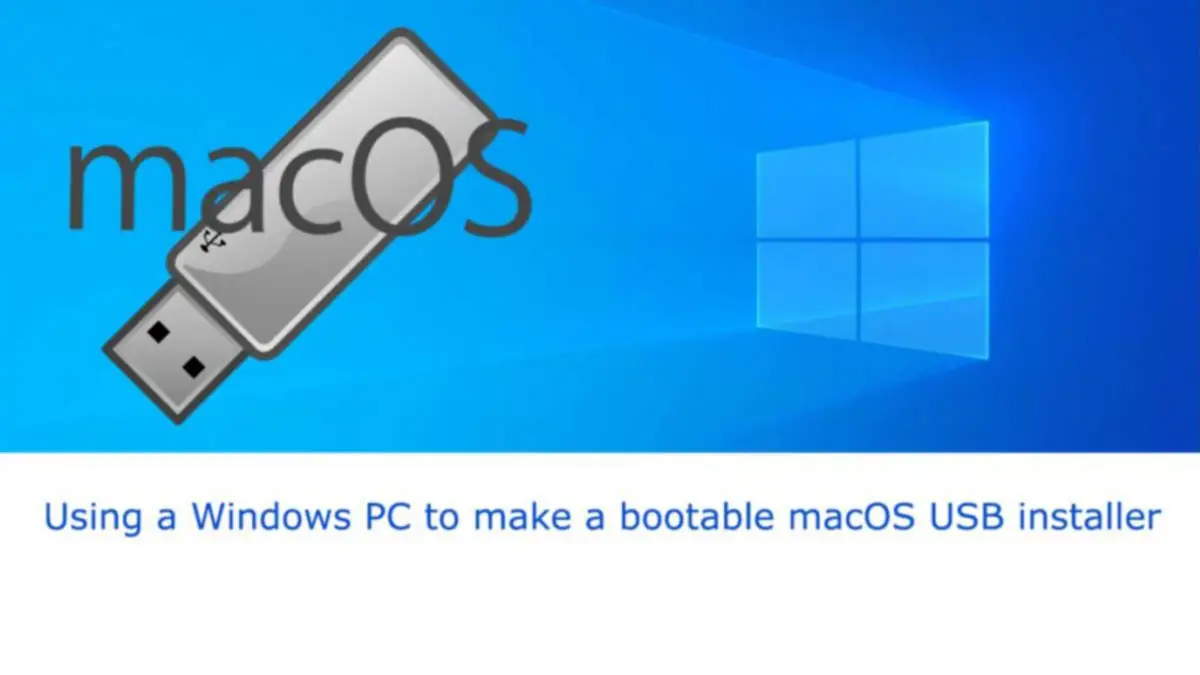UNetbootin can create a bootable Live USB drive. It loads distributions either by downloading a ISO (CD image) files for you, or by using an ISO file you've already downloaded. Using UNetbootin. Select an ISO file or a distribution to download, select a target drive (USB Drive or Hard Disk), then reboot once done. The tool allows users to open, extract, burn, create, edit, compress, encrypt, and convert ISO Files. The great thing about PowerISO is that it allows users to create Bootable USB Drive. For that, users need to pick ‘Create Bootable USB’ from the drop-down menu and then select the ISO file and USB drive. After that, right-click the USB Drive and select Restore with Disk Image; Point to your Mac OS.dmg or.iso file by clicking the add button. After that TransMac will create bootable Mac OS USB within few minutes. Then you can insert it into your Mac, hold down the option key while turn on and boot your system with this USB.
In case you think of downloading Windows from Microsoft Store, you are surprised with two alternatives: The user has access to download an assortment of compacted documents; the user can download an ISO record.
An ISO record joins all the Windows establishment documents into a solitary uncompressed record. On the off chance, if the user plans to download an ISO record so the user is allowed to create a bootable document from a USB drive, duplicate the Windows ISO document in drive and run the Windows USB Tool. At that point basically, you just need to introduce Windows onto your PC straightforwardly from your USB or DVD drive.
From that same File Explorer window, you can also create bootable Windows 10 installation media on a USB flash drive. In addition to the ISO file, you also need a USB flash drive at least 8 GB in.
So basically, after you have downloaded the ISO record, you should duplicate it onto a USB. At the point when you’re prepared to introduce Windows, embed the USB drive or DVD with the ISO record on it and afterward run Setup.exe from the root organizer on the drive.
This permits you to introduce Windows onto your machine without having to initially run a current working framework. On the off chance that you don’t erase your duplicate of the ISO document in the wake of introducing the Windows programming, the duplicate of the ISO record considers your one back-up duplicate.
In the event that you have to download the product once more, you can go to your Download Purchase History in your Microsoft Store record and access the download there.
Also Read:-How to Download and Install Windows 8 Step-by-Step Tutorial
The basic computer system necessities
- Windows XP SP2, Windows Vista, or Windows 7 (32-piece or 64-piece)
- Pentium 233-megahertz (MHz) processor or quicker (300MHz is suggested)
- 50MB of free space on your hard drive
- DVD-R drive or 4GB removable USB drive
This instructional exercise will assist you with the establishment of Windows from image (.iso and .img) document utilizing USB Drive.
Set-up the Bootable USB Drive
On the off chance, the user needs to create a Windows 7 bootable USB drive with a 4GB drive. Be that as it may, on the off chance that you need to make a bootable drive of Windows 8, Windows 8.1 or Windows 10, then it’s imperative for you to get an 8GB USB drive.
Then, you are required to format the USB drive utilizing the FAT32 or NTFS document framework. It is recommended designing the USB drive utilizing NTFS record framework for better similarity with more up to date Windows renditions.
Click on the run button to start the PowerISO (v6.5 or more up to date form, download here). Additionally, the USB drive you expect to boot from.
- “Make Bootable USB Drive” > click “…” tab to open the iso record of the Windows working framework.
- Select the right USB drive from the “Goal USB Drive” list if various USB drives are associated with the PC.
- Pick the best possible composing strategy. “USB-HDD” is suggested.
- Snap “Start” catch to begin making bootable USB drive.
- Power ISO prevents the user’s confidential information on the USB drive. Snap “alright” to continue. The program will begin composing USB drive and indicating the advancement data. You ought to get the message “Composing USB drive finished effectively.” after the activity finishes.
Set-up the Configuration for the BIOS
Presently you’ll have to extricate all records from Windows arrangement ISO. You can remove the documents utilizing a record chronicle programming, for example, 7-Zip, WinRAR, and so on. You can do this by right-tapping on ISO picture document and afterward choosing the “Mount” choice. Presently you simply need to duplicate all records from removed or mounted Windows ISO to your USB drive. That’s everything. And finally, you have made it to the mark by completing the process of creating bootable Windows 7 from ISO file.
Proceed to Boot and Establishing Windows From USB Drive
- Reboot the framework.
- During the booting process, get into the BIOS setup screen by continuously pressing on keys like F1, F2, Delete or Escape. Hotkey directions are by and large displayed on the screen.
- Visit the segment that holds your boot gadgets.
- With your USB drive connected, the USB drive ought to be recorded. In the event that it isn’t, your framework probably won’t bolster booting from USB. Expecting that it is upheld (just like the case with for all intents and purposes all cutting edge equipment), elevate your USB drive to the essential boot gadget.
- Exit from the BIOS arrangement, sparing all changes.
Create Bootable Windows 7 USB from ISO File
You can create bootable Windows 7 USB from ISO file by accessing the link below. Also, make sure that you have enough back up before you proceed with the same. There are a lot of duplicate ISO images on the market and it is best to download the same from a trusted source.

UNetbootin allows you to create bootable Live USB drives for Ubuntu and other Linux distributions without burning a CD.
You can either let UNetbootin download one of the many distributions supported out-of-the-box for you, or supply your own Linux .iso file.
Features
UNetbootin can create a bootable Live USB drive
It loads distributions either by downloading a ISO (CD image) files for you, or by using an ISO file you've already downloaded.
Using UNetbootin
Select an ISO file or a distribution to download, select a target drive (USB Drive or Hard Disk), then reboot once done. If your USB drive doesn't show up, reformat it as FAT32.
If you used the 'USB Drive' install mode: After rebooting, boot from the USB drive. On PCs, this usually involves pressing a button such as Esc or F12 immediately after you turn on your computer, while on Macs, you should hold the Option key before OSX boots.
If you used the 'Hard Disk' install mode: After rebooting, select the UNetbootin entry from the Windows Boot Menu.
Supported Distributions
UNetbootin has built-in support for automatically downloading and loading the following distributions, though installing other distributions is also supported:
UNetbootin can also be used to load various system utilities, including:
Installing Other Distributions Using UNetbootin
Download and run UNetbootin, then select the 'disk image' option and supply it with an ISO (CD image).
UNetbootin doesn't use distribution-specific rules for making your live USB drive, so most Linux ISO files should load correctly using this option. However, not all distributions support booting from USB, and some others require extra boot options or other modifications before they can boot from USB drives, so these ISO files will not work as-is. Also, ISO files for non-Linux operating systems have a different boot mechanism, so don't expect them to work either.
FAQs
Distribution X isn't on the list of supported distributions, will it work?
» Maybe, see Installing Other Distributions Using UNetbootin.
UNetbootin isn't able to download the distribution, what should I do?
Download the ISO straight from the website, then provide it to UNetbootin via the diskimage option.
My USB stick isn't booting, what should I do?
Reformat the USB drive as FAT32, then use UNetbootin again to put your distribution on the USB stick.
My USB stick/hard drive isn't detected, what should I do?
Reformat the USB drive as FAT32, then use UNetbootin again. If it still isn't showing up, use the targetdrive command line option.
How do I use UNetbootin from the command line?
» See UNetbootin Command Line Options.
How does UNetbootin work, and what does it do?
» See How UNetbootin Works.
» See USB Drive and Hard Disk Install Modes.
Where can I report bugs, submit patches, etc?
First, make sure you are using the latest version available on this website.
» See Github Issues to file a bug report.
» See Github Pull Requests to submit a patch.
Does UNetbootin have any spyware, viruses, trojans, or other malware?
No; though some anti-virus products may raise 'Trojan.generic' warnings due to the auto-uninstall feature, these are false positives. Just make sure you obtain UNetbootin from this site, not some shady third-party source. If you're absolutely paranoid, you can check the source code and compile it yourself.
What translations are available, and how can I use them?
A number of translations are included in the latest UNetbootin release. See the Translations Page for the status of each.
If a translation corresponding to your system's native language has already been included into UNetbootin, it should automatically load the corresponding translation. Alternatively, you can force the language to use via the lang=es command-line option, where you substitute es with the the 2-letter ISO 639-1 code for your language.
Can I help translate?
If you'd like to help translate this website, join the project on Transifex, then edit translations either on this website or on Transifex.
If you'd like to help translate the UNetbootin program itself, please use Launchpad Translations. If you are new to Launchpad, you will first have to join the corresponding Ubuntu Translators group for the language you intend to translate. For information on using the Launchpad Translations system, see the translations help page.
» See UNetbootin Translations
Removal Instructions (Applicable only to Hard Disk installs)
If using Windows, UNetbootin should prompt you to remove it the next time you boot into Windows. Alternatively, you can remove it via Add/Remove Programs in the Control Panel.
If using Linux, re-run the UNetbootin executable (with root priveledges), and press OK when prompted to uninstall.

Removal is only required if you used the 'Hard Drive' installation mode; to remove the bootloader from a USB drive, back up its contents and reformat it.
Uninstalling UNetbootin simply removes the UNetbootin entry from your boot menu; if you installed an operating system to a partition using UNetbootin, removing UNetbootin will not remove the OS.
To manually remove a Linux installation, you will have to restore the Windows bootloader using 'fixmbr' from a recovery CD, and use Parted Magic to delete the Linux partition and expand the Windows partition.
Where's the source code, and how can I compile or modify it?

Source code is on Github, though you may prefer a tarball of the latest release.
» See Compiling UNetbootin.
» See UNetbootin Command Line Options.
» See Building a UNetbootin Plugin.
» See Using a UNetbootin Plugin.
» See Building a Custom UNetbootin Version.
» See List of Custom UNetbootin Versions and Plugins.
License
UNetbootin was created and written by Geza Kovacs (Github: gkovacs, Launchpad: gezakovacs, contact info).
Translators are listed on the translations page.
UNetbootin is licensed under the GNU General Public License (GPL) Version 2 or above. Site materials, documentation, screenshots, and logos are licensed as Creative Commons Attribution-Share-Alike 3.0.
Other open-source projects from the creators of UNetbootin
HabitLab
Mac Os X Iso To Usb Bootable Windows
Macos Iso Usb Boot
